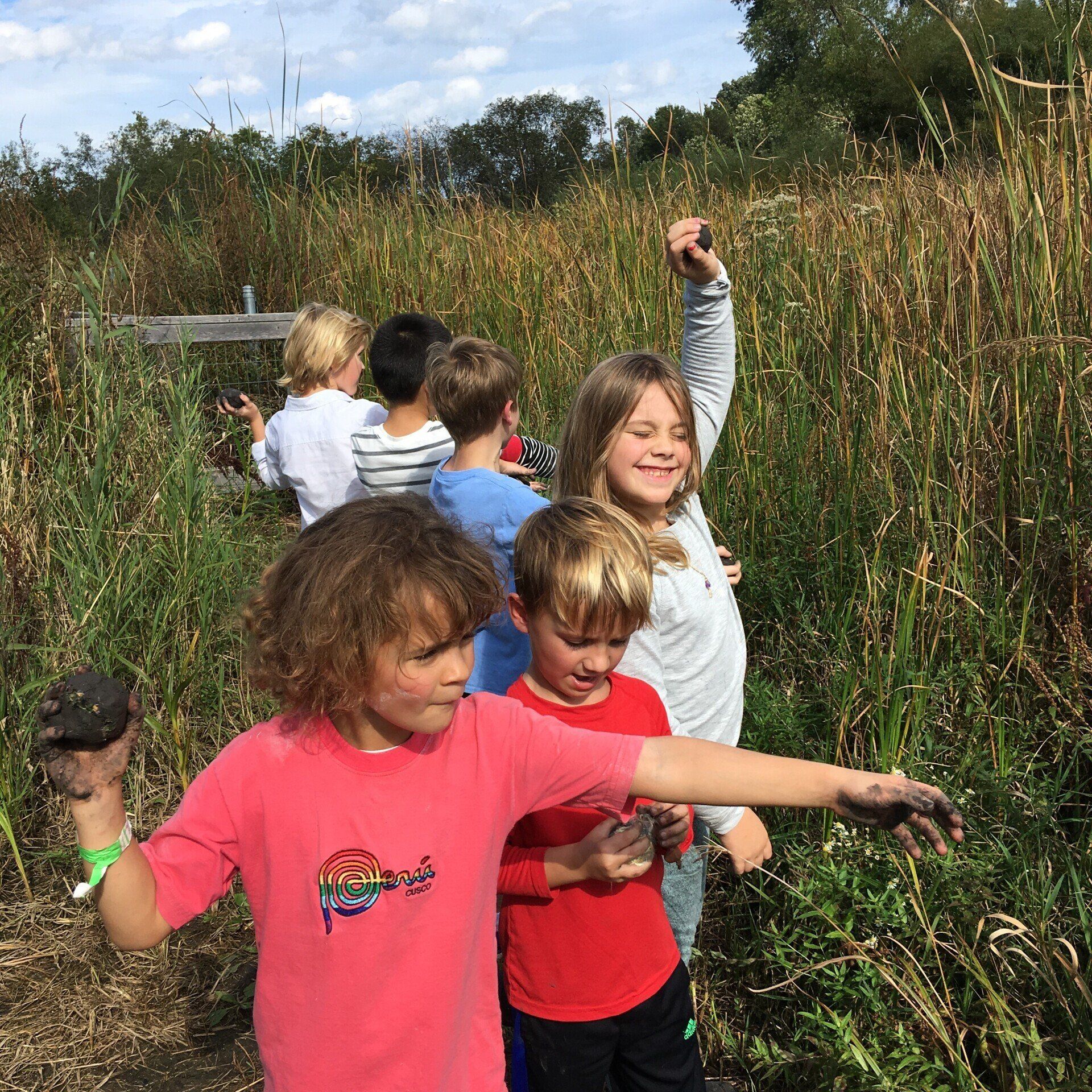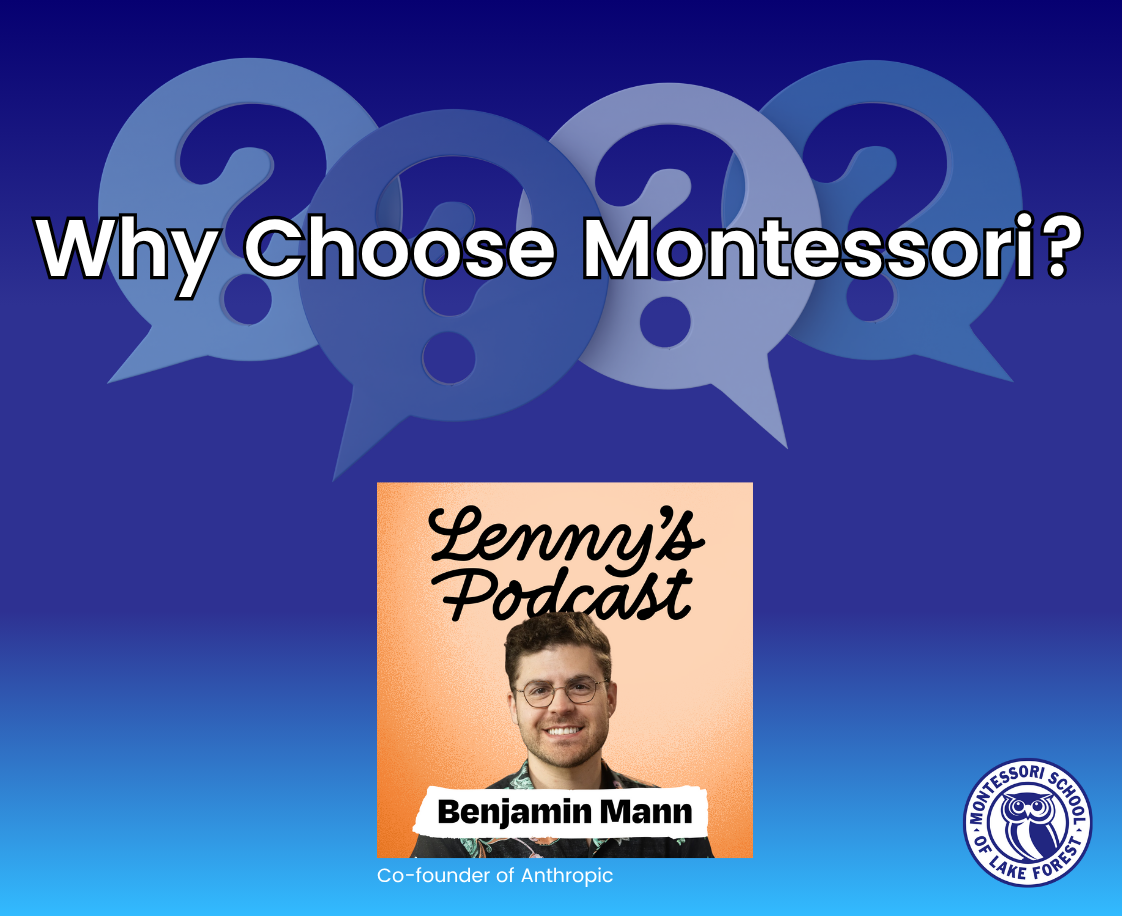An essay by Julia Lunn, MSLF’s Outdoor Classroom Director
A healthy ecosystem starts with healthy biodiversity; that means a large variety of life! Think about your diet: broccoli’s good, but if you eat just broccoli is that a healthy diet for a growing body? No! It’s the same for an ecosystem. A healthy prairie needs sunflowers, but in order to attract a diverse amount of native wildlife it also needs a balance of grasses, sedges, forbs or wildflowers.
 In early October, our Lower Elementary students worked to encourage a healthy prairie at the Montessori School of Lake Forest. The school’s prairie is the western edge of the Middlefork Savanna
, an ecologically rich ecosystem carefully maintained with the help of many folks including Lake County Forest Preserve District
and Lake Forest Open Lands Association.
In early October, our Lower Elementary students worked to encourage a healthy prairie at the Montessori School of Lake Forest. The school’s prairie is the western edge of the Middlefork Savanna
, an ecologically rich ecosystem carefully maintained with the help of many folks including Lake County Forest Preserve District
and Lake Forest Open Lands Association.
Led by Outdoor Educators Brandon Chartier, Alex Close and Julia Lunn, students gathered in the Ritter Story Ring for a story about the mighty oak tree. Following the story and introduction, they split off into three groups to gather native seeds from our prairie and surrounding area. Plants included Illinois Bundleflower, Milkweed, Bergamot, Cup Plant, Joe Pye Weed, Obedient Plant, and New England Aster.

Proper restoration involves encouraging natives, but also discouraging and managing non-native species. Students were introduced to the non-native plant Purple Loosestrife. Loosestrife was introduced to North America in the early 19 th century by European settlers. It is an invasive species that needs to be managed. Working with clippers and plastic bags, students clipped heads off of the plant and deposited them into the trash bags to be properly disposed of. One Purple Loosestrife plant can produce as many as 3 million seeds a year! If left un-managed, it would take over the prairie.
We are grateful to earlier students at MSLF for their Earth Stewardship and work to maintain a healthy prairie. In 2001 the Upper Elementary Class introduced the Galerucella calmariensis, a species of beetle with a voracious appetite for the Purple Loosestrife and a proven biological control method for the plant. I’m sure without their work we would have much more Loosestrife to manage!
After all the native seeds were collected the fun really began. Students formed mud balls and tucked the seeds into them. It was much like forming a snowball, but a lot dirtier! After the seeds were neatly tucked and the mudballs formed, the students tossed the native seed “bombs” off into the prairie. Encasing the seeds in rich soil and sowing the seeds during the cold and wet fall will give the seeds their best chance to work their way into the prairie soil and germinate.

On Tuesday. November 13, we kicked off our Outdoor Classroom initiative Hello Native!
Last year we said bye bye to the buckthorn on our property and now it’s time to say hello to the native species. Again in partnership with Lake County Forest Preserves and Lake Forest Open Lands we had an opening assembly followed by outdoor work seeding native plants. Seeds were generously provided by both LCFPD and LFOLA, and our students also collected seeds as part of their outdoor work in early October. Who knows, maybe we’ll see more Native Seed Bombs flying over our Prairie!
Check out photos from the Hello Native! Kick Off!




